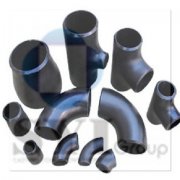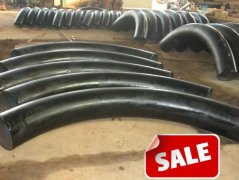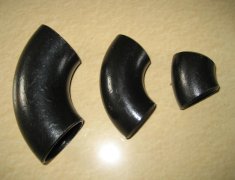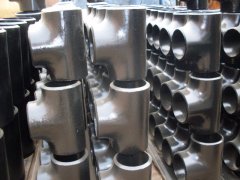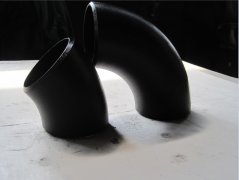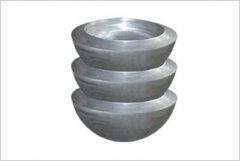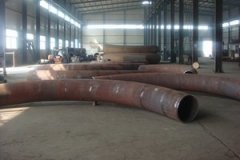Mechanical properties of galvanized steel pipe
① tensile Strength (σb): The maximum force (FB) that is sustained by the specimen during the stretching process, divided by the stress (σ) of the original cross-sectional area (so), is called the tensile strength (σb) and the Unit is n/mm2 (MPa). It represents the maximum ability of a metal material to resist damage under tensile forces.
Formula: The maximum Force, N (Newton), the original cross-sectional area of so--specimen, and the mm2 of fb--specimen. ② yield Point (σs): A metal material with a yielding phenomenon, in which the force does not increase (keep constant) when it is stretched, and is said to be the yielding point. If the force is decreased, the upper and lower yielding points should be distinguished. The unit of Yield point is n/mm2 (MPa). Upper yielding Point (ΣSU): The maximum stress before the first descent of the specimen yielding, and the lower yielding point (ΣSL): The minimum stress in the yield phase when the initial instantaneous effect is disregarded.
In-type: fs--specimen tensile process (constant), N (Newton) so--specimen original cross-sectional area, mm2. Elongation at ③: (σ) in tensile test, the increase in the length of the gauge and the percentage of the length of the original mark distance is called the elongation rate. In σ, the unit is%.
Type: The length of the l1--specimen is drawn, mm, the length of the l0--specimen, MM. ④ section Shrinkage: (ψ) in tensile test, the maximum reduction of the cross-sectional area of the specimen after pulling and the percentage of the original cross sectional area is called the section shrinkage rate. In ψ, the unit is%.

In-type: s0--specimen original cross-sectional area, mm2, s1--specimen after pulling down the minimum cross-sectional area of the diameter, mm2. ⑤ Hardness Index: The metal material resists the hard object to collapse the surface the ability, is called the hardness. According to the test method and application range, hardness can be divided into Brinell hardness, Rockwell hardness, Vickers hardness, shore hardness, microhardness and high-temperature hardness.
For the general use of pipe has Brinell, Rockwell, Vickers hardness of three kinds. Brinell hardness (HB): a certain diameter of steel ball or cemented carbide ball, with a specified test force (F) into the model surface, after the specified retention time after unloading test force, measuring the surface of the specimen indentation diameter (L). The Brinell hardness value is the quotient of the test force divided by the spherical surface area of the indentation.
In HBS (steel ball), the unit is n/mm2 (MPa).
Performance impact
(1) Carbon, the higher the carbon content, the higher the hardness of steel, but its plasticity and toughness is worse.
(2) Sulfur, is the harmful debris in steel, high sulfur-containing steel in the high-temperature pressure processing, brittle crack, usually called thermal brittleness. (3) Phosphorus, can make the plasticity and toughness of steel significantly decreased, especially at low temperatures more serious, this phenomenon is called cold brittleness. In High-quality steel, sulfur and phosphorus should be strictly controlled.
On the other side, it is advantageous to improve the machinability of steel because it has higher sulfur and phosphorus in low carbon steel, so it can cut easily.
(4) Manganese, can improve the strength of steel, can weaken and eliminate the adverse effects of sulfur, and can improve the hardenability of steel, high manganese content of higher alloy steel (manganese steel) has good wear resistance and other physical properties.
(5) Silicon, it can improve the hardness of steel, but the plasticity and toughness decline, electrical steel contains a certain amount of silicon, can improve the soft magnetic properties.
(6) Tungsten can improve the red rigidity and thermal strength of steel, and can improve the wear resistance of steel.
(7) Chromium, can improve the hardenability and wear resistance of steel, can improve the corrosion resistance of steel and anti-oxidation. In order to improve the corrosion resistance, the general steel tube (clarinet) galvanized.
Galvanized steel pipe is divided into hot galvanized and electric steel zinc, hot-dip galvanized coating thick, galvanized low cost, so galvanized steel pipe.
上一篇:How complex is the type distribution of carbon steel elbow?
下一篇: Method of measuring thickness of punching pipe elbow
(Tag):

